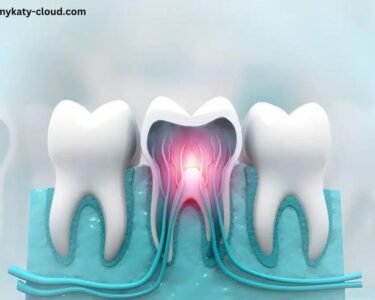The Sit & Reach test is a widely recognized and utilized assessment tool in physical fitness evaluations. This test specifically measures one of the key components of health-related fitness: flexibility. Understanding the Sit & Reach test’s role in assessing flexibility provides valuable insights into how this physical attribute influences overall health and fitness.
Understanding Flexibility
Flexibility is defined as the range of motion available at a joint or group of joints. It is an essential component of health-related fitness, alongside cardiorespiratory endurance, muscular strength, muscular endurance, and body composition. Good flexibility can contribute to overall physical performance, prevent injuries, and improve daily functional movements. Flexibility is particularly crucial because it impacts how well a person can perform various physical activities and maintain balance and coordination.
Importance of Flexibility in Health-Related Fitness
Flexibility is crucial for several reasons:
- Injury Prevention: Adequate flexibility helps maintain proper joint alignment and reduces the risk of injuries caused by strains or sprains. It allows muscles and tendons to stretch and adapt to physical demands, reducing the likelihood of injury during physical activities.
- Enhanced Performance: Improved flexibility can enhance athletic performance by allowing for greater range of motion. This can improve efficiency in movements, such as running, jumping, and lifting.
- Increased Blood Flow: Stretching and maintaining flexibility promote better circulation, which helps deliver nutrients to muscles and aids in the removal of metabolic waste products.
- Improved Posture and Alignment: Flexibility supports proper posture and alignment, reducing the risk of back pain and other musculoskeletal issues.
- Functional Movements: Flexibility is essential for performing everyday tasks, such as bending, reaching, and twisting, with ease and efficiency.
The Sit & Reach Test: An Overview
The Sit & Reach test is a simple and effective measure of flexibility, primarily focusing on the flexibility of the lower back and hamstrings. It is commonly used in fitness assessments due to its ease of administration and the valuable information it provides about an individual’s flexibility.
How the Sit & Reach Test is Administered
- Equipment Needed: The test typically requires a Sit & Reach box or a similar measuring device. The box is marked with measurements, allowing the participant to reach forward and measure their flexibility.
- Testing Procedure:
- Preparation: The participant sits on the floor with their legs extended straight ahead. The soles of the feet should be placed against the edge of the Sit & Reach box, with knees fully extended.
- Execution: The participant reaches forward as far as possible while keeping their legs straight. The reach is measured in centimeters or inches from the start position to the point where the participant’s fingertips touch the measuring scale.
- Repetition: The test is often performed multiple times to ensure accuracy. The best reach distance is recorded for analysis.
- Scoring: The test score is the distance reached beyond the toes, which indicates the flexibility of the lower back and hamstrings. Scores are compared to normative data to assess flexibility levels relative to age and gender.
Benefits and Limitations of the Sit & Reach Test
Benefits:
- Simplicity: The Sit & Reach test is straightforward and does not require specialized equipment or extensive training to administer.
- Cost-Effective: It is an affordable option for assessing flexibility compared to other more complex tests.
- Comprehensive Measure: It provides a good indication of flexibility in the lower back and hamstrings, which are critical areas for overall mobility and functional movement.
Limitations:
- Limited Scope: The Sit & Reach test primarily measures flexibility in the lower back and hamstrings, potentially overlooking flexibility in other body parts.
- Variability: Factors such as body composition, age, and gender can affect test results, and the test may not account for individual variations in flexibility.
- Technique Sensitivity: Accurate results depend on proper technique and body positioning, which may be challenging for some individuals to maintain.
Interpreting Results and Improving Flexibility
The results of the Sit & Reach test are typically interpreted using normative data, which provides reference ranges based on age and gender. Participants can compare their results to these norms to gauge their flexibility levels.
To improve flexibility and achieve better Sit & Reach test results, individuals can incorporate various stretching and flexibility exercises into their fitness routines. Effective strategies include:
- Static Stretching: Performing static stretches that target the lower back and hamstrings can help improve flexibility over time. Examples include seated forward bends and standing hamstring stretches.
- Dynamic Stretching: Incorporating dynamic stretches, such as leg swings and hip circles, can enhance flexibility and range of motion as part of a warm-up routine.
- Yoga and Pilates: These practices emphasize flexibility and core strength, which can contribute to improved performance on the Sit & Reach test.
- Consistency: Regular stretching and flexibility exercises are crucial for making progress and maintaining improved flexibility.
Flexibility and Overall Health
Flexibility is a fundamental component of health-related fitness and plays a significant role in overall well-being. While the Sit & Reach test is an effective tool for assessing lower back and hamstring flexibility, it is essential to recognize that flexibility is just one aspect of a comprehensive fitness profile.
A well-rounded approach to fitness includes addressing all components of health-related fitness: cardiorespiratory endurance, muscular strength, muscular endurance, body composition, and flexibility. Combining flexibility training with cardiovascular exercise, strength training, and a balanced diet supports overall health and fitness.
Conclusion
The Sit & Reach test serves as a valuable measure of flexibility, particularly in the lower back and hamstrings. Its simplicity and effectiveness make it a popular choice for fitness assessments, providing insights into an individual’s flexibility levels and potential areas for improvement. By understanding the importance of flexibility and incorporating targeted exercises into their routines, individuals can enhance their overall health and physical performance, reduce the risk of injury, and improve their quality of life.




